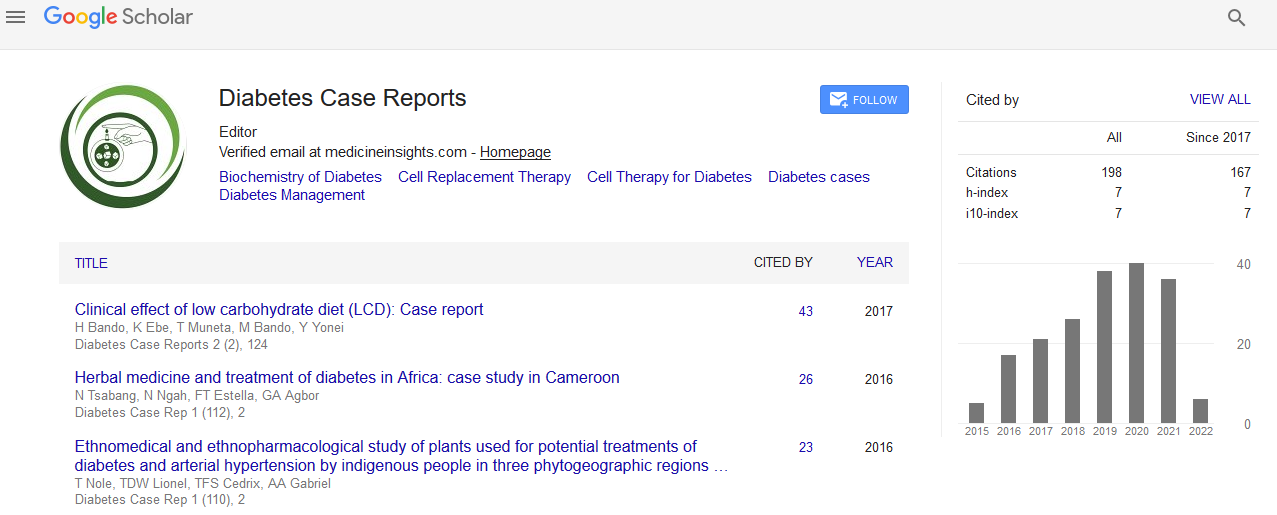Indexed In
- RefSeek
- Hamdard University
- EBSCO A-Z
- Euro Pub
- Google Scholar
Useful Links
Share This Page
Journal Flyer

Open Access Journals
- Agri and Aquaculture
- Biochemistry
- Bioinformatics & Systems Biology
- Business & Management
- Chemistry
- Clinical Sciences
- Engineering
- Food & Nutrition
- General Science
- Genetics & Molecular Biology
- Immunology & Microbiology
- Medical Sciences
- Neuroscience & Psychology
- Nursing & Health Care
- Pharmaceutical Sciences
Abstract
Endocrinology 2018: Heart rate variability at the stages of carbohydrate metabolism disturbance- Irina Kurnikova- RUDN University, Russia
Irina Kurnikova
Statement of the Problem: The formation of a systemic disease such as diabetes, in which the vascular and nervous system is involved in the pathological process, accompanied by disturbances in the processes of vegetative regulation. At which stages of carbohydrate metabolism disturbance (CMD) these disorders begin is a matter requiring further study. Purpose: The purpose of this study is to state of mechanisms of autonomic regulation at the stages of disorders of carbohydrate metabolism (metabolic syndrome, carb tolerance, diabetes type 2- DT2).
Methodology & Theoretical Orientation: 112 patients were examined. 1st group - patients with metabolic syndrome (MS) without carb tolerance (CT) (28 people); 2nd group - MS with CT (13 people) and 3rd group - patients with DT2 (71 people). Autonomic regulation was studied by using spectral analysis of daily variability of the heart rhythm (HR) power spectrum of oscillation in three frequency bands: 0.004-0.08 Hz (very low frequency – VLF), 0,09-0,16 Hz (low frequency – LF), 0,17-0,5 Hz (high frequency – HF). In addition, Index of vegetative balanced (IVB), IC (index of centralization) were analyzed. Findings: A decrease IVB (LF/HF) was observed in patients with MS (0.6±0.1). At the same time, a significant difference in groups 2 and 3 (p<0.05) was found, which underlines the importance of the stages of CMD. Evaluation of spectral analysis revealed a significant increase of ULF% (Ultra low frequency) in the 3rd group which indicates disruption in adaptation and violation of autonomic regulation of HR. The revealed significant difference in the analysis of the IC in groups with MS and DT2 emphasizes the importance of the stages of CMD. The increase in IC (4.1±0.9) in the 3rd group confirmed the high activity of the central regulation loop in relation to the autonomic. And this in the prognostic attitude testified to depletion of regulatory mechanisms and a high risk of development of “vascular accidents” (OR=2.7, p=0.001).
Conclusion & Significance: The revealed significant difference of the CI in groups MS and DT2 emphasizes the importance of the stages of CMD. Changing the IC towards the increase at the stages of progression of CMD testifies to the activation of the central contour of regulation and the gradual transition from the control level to the administering level. The obtained data allow considering this mechanism to be sufficient to increase the risk of cardiovascular complications and defeat of target organs in patients with MS and DT2.
Published Date: 2020-08-01;

